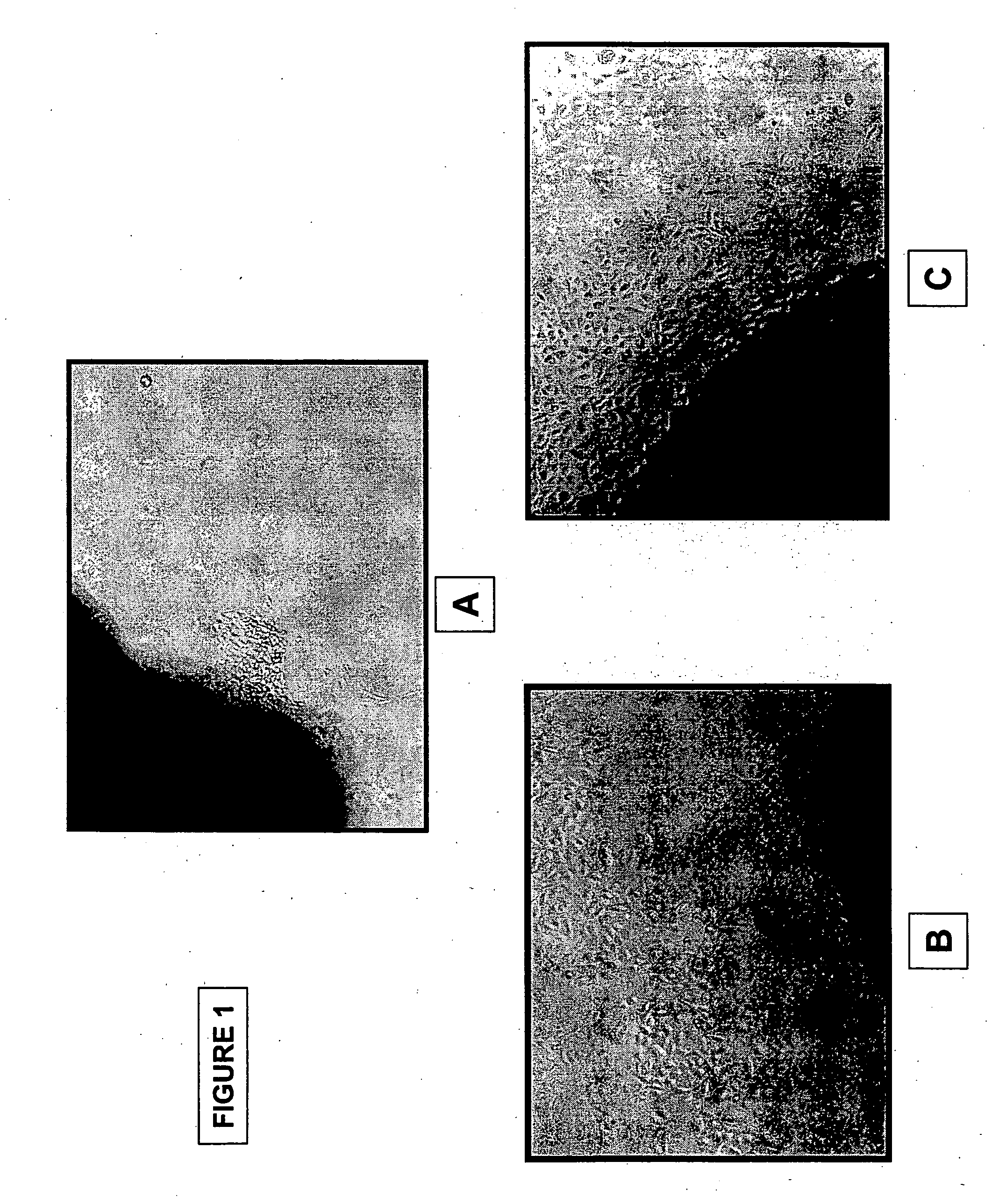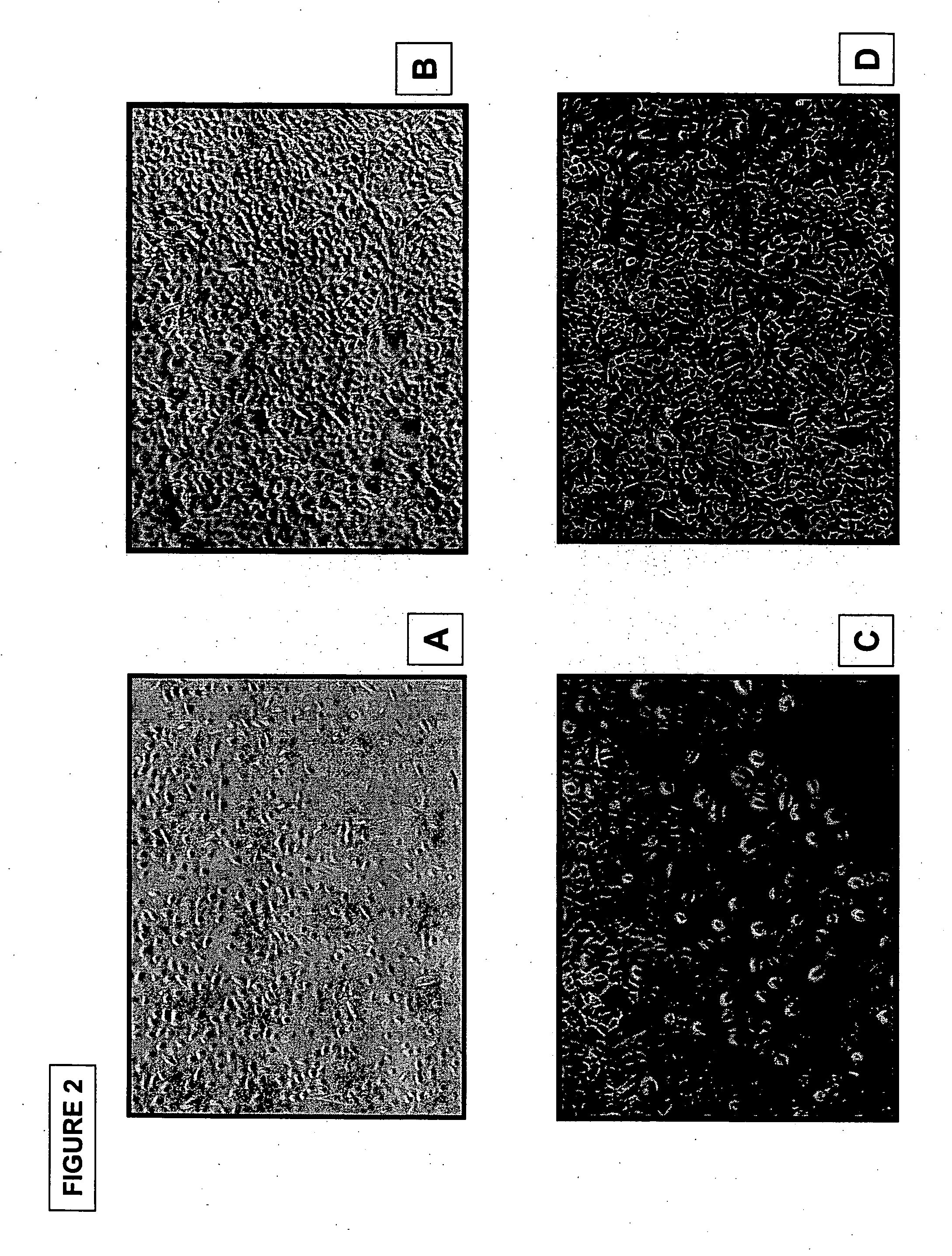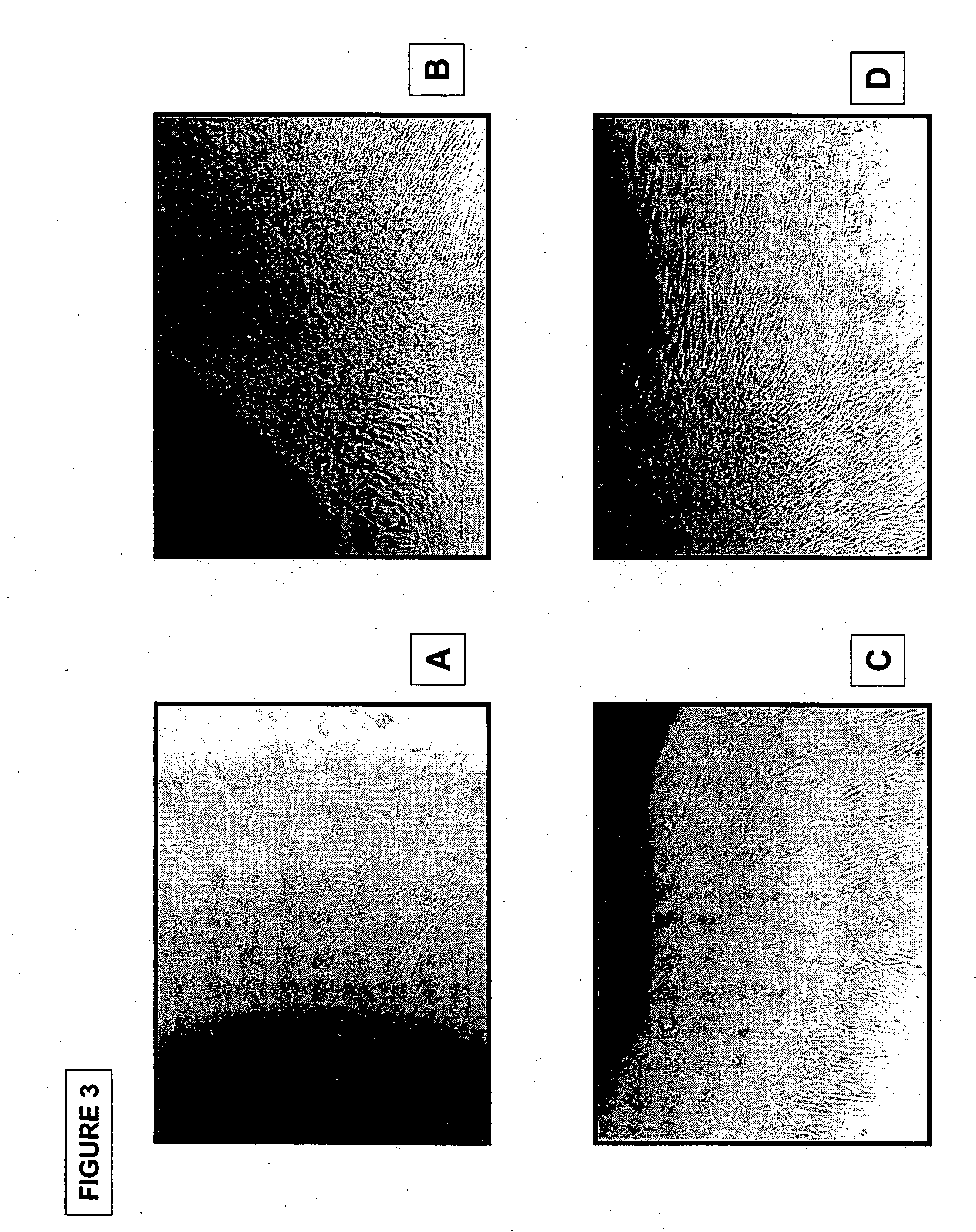Isolation, cultivation and uses of stem/progenitor cells
a technology of stem cells and stem cells, which is applied in the field of stem/progenitor cell isolation, cultivation and use, and can solve the problems of many ethical problems, low number of stem cells extracted, and high cost of collection
- Summary
- Abstract
- Description
- Claims
- Application Information
AI Technical Summary
Benefits of technology
Problems solved by technology
Method used
Image
Examples
example 2
Cell Separation / Cultivation
[0097] Dissection of umbilical cord tissue is first performed to separate the umbilical cord amniotic membrane from Wharton's jelly (i.e. the matrix of umbilical cord) and other internal components. The isolated amniotic membrane is then cut into small pieces (0.5 cm×0.5 cm) for cell isolation. Explant is performed by placing the pieces of umbilical cord amniotic membrane on tissue culture dishes at different cell culture conditions for isolation of either epithelial or mesenchymal stem cells.
[0098] For mesenchymal cell separation / cultivation, the explants were submerged in 5 ml DMEM (Invitrogen) supplemented with 10% fetal bovine serum (Hyclone) (DMEM / 10% FBS) and maintained in a CO2 cell culture incubator at 37° C. The medium was changed every 2 or 3 days. Cell outgrowth was monitored under light microscopy. Outgrowing cells were harvested by trypsinization (0.125% trypsin / 0.05% EDTA) for further expansion and cryo-preservation using DMEM / 10% FBS.
[009...
example 3
Identification of Stem / Progenitor Cells
[0104] Epithelial cells: FIG. 1 shows pictures of outgrowing epithelial cells from umbilical cord amniotic membrane prepared by the method using tissue explant (40× magnification). Pictures were taken at day 2 (FIG. 1A) and day 5 (FIG. 1B, C) of tissue culture. Cell morphology analysis demonstrated polyhedral shaped epithelial-like cells. Enzymatic digestion of the umbilical cord segments yielded similar (FIG. 2), epithelial cells at day 2 (Fig. A, C) and day 5 (Fig. B, D) (40× magnification). FIG. 7 shows pictures of colony formation of epithelial stem cells from umbilical cord amniotic membrane cultured on feeder layer using Green's method (40× magnification). A colony of polyhedral shaped epithelial-like cells expanded rapidly from day 3 to day 7.
[0105] Mesenchymal cells: Outgrowth of mesenchymal cells explanted from umbilical cord amniotic membrane was observed as early as 48 hours after placement in tissue culture dishes using DMEM suppl...
example 4
Cultivation of Stem / Progenitor Cells in Serum Free Media
[0113] UCMC cells were cultured in DMEM containing 10 FCS and in serum-free media, PTT-1, PTT-2 and PTT-3. The three media PTT-1, PTT-2 and PTT-3 were prepared by one of the present inventors, Dr Phan. In brief, these 3 media do not contain fetal bovine or human serum, but contain different cytokines and growth factors such as IGF, EGF, TGF-beta, Activin A, BMPs, PDGF, transferrin, and insulin. The growth factor components vary between media to assess differential growth characteristics. The cultivation was carried out as follows: Different proportions of growth factors and cytokines were added in basal media. UCMC were thawed and maintained in these media for 10 days. Cell proliferation was monitored under light microscopy.
[0114]FIG. 13 shows good UCMC growth in the 4 different media groups (FIG. 13-1 to FIG. 13-5), wherein the morphology of UCMC cells is different depending on the ratio or proportion of cytokines or growth ...
PUM
 Login to View More
Login to View More Abstract
Description
Claims
Application Information
 Login to View More
Login to View More - R&D
- Intellectual Property
- Life Sciences
- Materials
- Tech Scout
- Unparalleled Data Quality
- Higher Quality Content
- 60% Fewer Hallucinations
Browse by: Latest US Patents, China's latest patents, Technical Efficacy Thesaurus, Application Domain, Technology Topic, Popular Technical Reports.
© 2025 PatSnap. All rights reserved.Legal|Privacy policy|Modern Slavery Act Transparency Statement|Sitemap|About US| Contact US: help@patsnap.com



